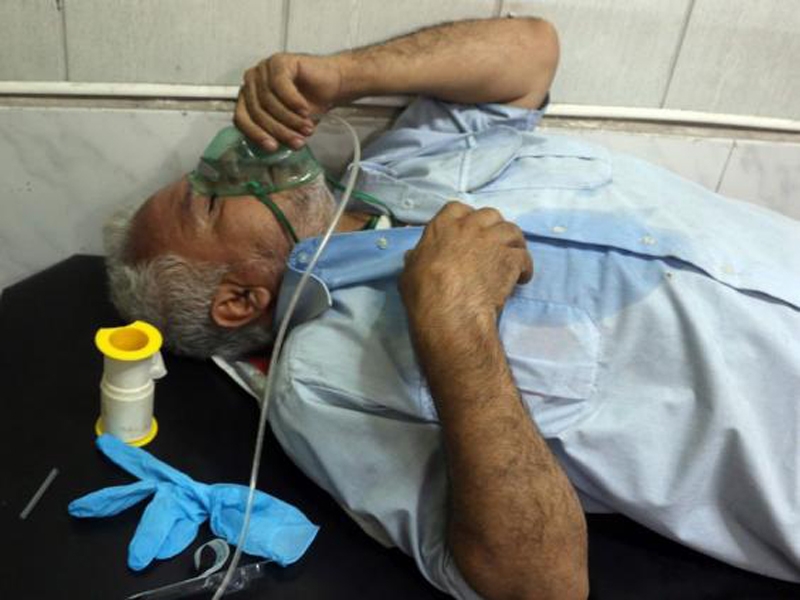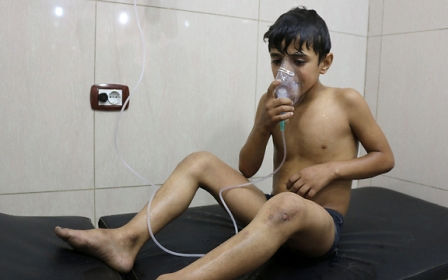Syrian army 'used chemical bombs in co-ordinated Aleppo assault'

Syrian government forces conducted coordinated chemical attacks in opposition-controlled parts of Aleppo during the final month of the battle for the city, Human Rights Watch said on Monday.
The rights group said it collected evidence that showing government helicopters dropping chlorine bombs in residential areas on at least eight occasions between 17 November and 13 December.
HRW said the attacks killed at least nine civilians, including four children, and injured another 200.
The attacks took place in areas where government forces planned to advance, HRW said - showing a coordinated strategy.
"The pattern of the chlorine attacks shows that they were coordinated with the overall military strategy for retaking Aleppo, not the work of a few rogue elements," said Ole Solvang, the group's deputy emergencies director.
"The UN Security Council shouldn’t let Syrian authorities or anyone else who has used chemical weapons get away without consequences."
HRW urged the Security Council to impose sanctions on senior leaders in Syria and called on the Syrian government to stop using chemicals as weapons - a violation of the Chemical Weapons Convention - and fully cooperate with a UN-appointed investigation, the Joint Investigative Mechanism, which had already identified military units responsible for earlier attacks using chlorine in Syria.
The actual number of chemical attacks in Aleppo between November 17 and December 13 could be higher than the eight documented in this report, the group said. It stressed its report included only those attack that could be corroborated with witnesses and journalists.
It noted that its report could not conclusively say the agent used was chlorine, but odours and symptoms presented by victims indicated as such.
"Those affected had trouble breathing, they were coughing hard, they were nauseated, some people fainted, some had foam coming from their mouth," a first responder for several attacks said.
"The chemicals would affect children most severely... they inhale and they end up suffocating."
High level of exposure to chlorine can lead to suffocation, as the chemical injuries produced from the dissolution of chlorine in the mucous membranes of the pulmonary airways result in severe buildup of fluid in the lungs.
Children and older people are particularly susceptible to the effects of chlorine gas.
Witnesses also said they observed a yellow or yellow-green smoke near the impact site of at least four attacks. In two attacks, journalists nearby captured the smoke on video. Chlorine is yellowish-green in its gaseous form.
For five of the chemical attacks, HRW reviewed photographs or video of remnants of the chemical-filled improvised munitions posted online or shared directly with Human Rights Watch.
Witnesses sometimes referred to the munitions as barrels or bombs. In all five incidents, the footage shows the same type of yellow gas cylinder. A label still visible on the remnant from one attack shows a warning that the cylinder contained gas.
The Syrian government has repeatedly denied using chemical weapons, and has often stated any use was by "terrorists" it was fighting.
New MEE newsletter: Jerusalem Dispatch
Sign up to get the latest insights and analysis on Israel-Palestine, alongside Turkey Unpacked and other MEE newsletters
Middle East Eye delivers independent and unrivalled coverage and analysis of the Middle East, North Africa and beyond. To learn more about republishing this content and the associated fees, please fill out this form. More about MEE can be found here.





